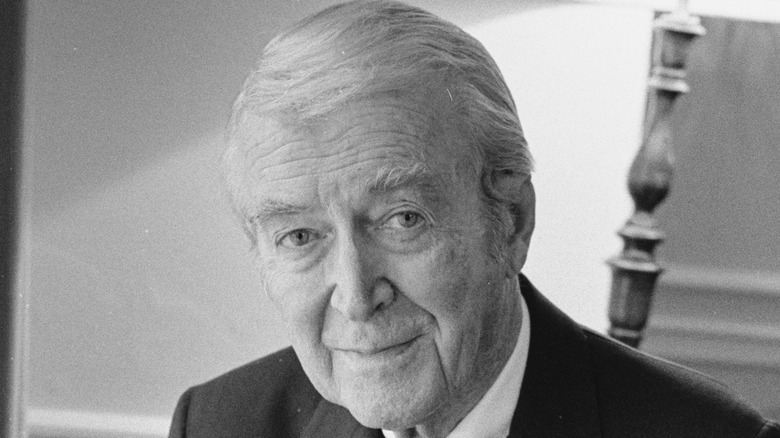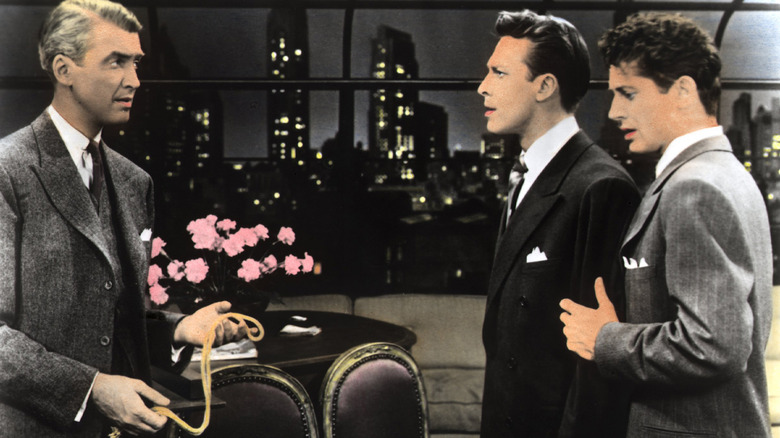Was This Jimmy Stewart's Hardest Role To Film?
James "Jimmy" Stewart was a man who was more than happy to rise to a challenge. A Pennsylvania native born into a strict and moralistic Presbyterian family, Stewart was already a famous face thanks to movies such as 1939's "Mr. Smith Goes To Washington" when he enlisted in the U.S. Air Force in 1941, per Britannica. An enthusiastic pilot with a commercial license while a civilian, Stewart remained in the Air Force until his mandatory retirement in 1968 at the age of 60, having been involved in 20 bomber missions, won various medals, and risen to the rank of brigadier general in the process.
And he was no less hard working as an actor. Over the course of a five-decade career, Stewart acted in almost 90 movies, working with some of the greatest screen actors and directors of his era on classics like "It's a Wonderful Life" (1946), "Harvey" (1950), and "The Man Who Shot Liberty Valance" (1962). But it was one director in particular who helped make Stewart an enduring icon of 20th-century cinema: the great Alfred Hitchcock.
Per Britannica, Hitchcock helped rebrand the aging Stewart as the star of dark thrillers, expanding his range beyond that of the naive innocence of his early work. With Hitchcock, Stewart gave some of his best performances in movies such as "Rear Window" (1954) and "Vertigo" (1958), both considered among the best movies of all time. But it was Hitchcock who also gave Stewart the role that may have been the toughest of his career — that of Rupert Cadell in Hitchcock's 1957 thriller "Rope."
'Rope'' was Hitchcock's big-budget experiment
"Rope" was Alfred Hitchcock's first film to be released in color, which wasn't the most notable of its technical achievements. In fact, the filming technique that Hitchcock had embraced for the production was one of the most arduous and stress-inducing of either his or James Stewart's long careers. Based on the notorious Leopold-Loeb murder of 1924, the movie is made up of a short series eight ten-minute takes, ingeniously edited together to give the sense that the events of the movie are happening in real-time over the course of an unbroken 80 minutes (via Britannica).
Stewart told The New York Times at the time of the movie's re-release in 1983: "It was the craziest, most difficult thing, it was completely new ... Making it was so complicated." Stewart also claimed that during filming he suggested to Hitchcock as a joke that they should build bleachers around the set and charge people to come and watch the cast sweat through the filming.
According to Stewart, it's even possible to see the strain on the actors' faces. "The last time I saw 'Rope,' he said, "maybe it was just my imagination but as the end of the reel came closer and closer I was conscious of everyone's getting sort of glassy-eyed. All of us were thinking, 'Oh God, don't let me go up on my lines now If I do we'll have to go back and do the whole thing again.'" However, Stewart told the paper that, despite the immense pressure, mistakes among Hitchcock's top-drawer cast were rare, and filming went relatively smoothly.

